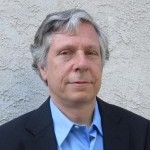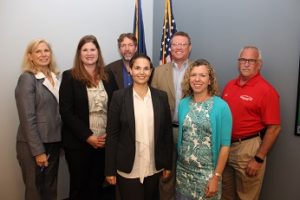The Smart Energy Initiative can help your organization maintain a competitive workforce with a grant to offset partial costs of energy-related training (eligible employers/trainees can receive a reimbursement of up to 50% of course costs for each trainee). Funding is provided by the Pennsylvania Department of Labor and Industry and the Chester County Workforce Development Board.
Eligibility & Conditions
- Trainees must be employed residents of Pennsylvania
- Training must occur between July 1, 2016 and June 30th 2017
- The following 29 courses are currently eligible for reimbursement for the 2016-2017 program year:
- Passive House Institute of US, Verifier Certification
- Passive House Institute of US, Certified Consultant
- LEED Green Associate
- LEED Accredited Professional
- Energy Modeling for LEED Projects
- WELL Accredited Professional
- Well Being Standard
- NORA Gold Tank
- NORA Gold Hydronics
- NORA Gold Venting
- NORA Combustion Tune Up
- NORA Bronze Basic Oil Heat Technician
- WaterFurnace International Geothermal Residential Forced Air Equipment Training
- Building operator trainings: Building Science of Commercial Buildings (AM), and Building Operator Training and Re-tuning (PM)
- Enterprise Green Community Standard Workshop
- Association of Energy Engineers Certified Water Efficiency professional (CWEP)
- Association of Energy Engineers Certified Energy Manager
- Association of Energy Engineers Certified Building Commissioning Professional (CBCP)
- Association of Energy Engineers Certified Measurement & Verification Professional (CMVP)
- Association of Energy Engineers Certified Lighting Efficiency Professional (CLEP)
- BPI Certified Building Analyst
- BPI Certified Envelope Professional
- BPI Infiltration and Duct Leakage Certification
- BPI Recertification
- BPI Healthy Home Evaluator (HHE) Certification
- BPI Multifamily Certification
- Passive House Institute US (PHIUS) Verifier
- North American Technical Excellence (NATE) Certified Technician
- BREEAM USA In-Use Assessor Certification
If you or your employees have taken any of the classes listed above and you have not yet applied for grant funds, please contact us. If you have an energy industry related class in which you are interested in taking, or have already taken, during this time frame and it is not on the list above please contact us; we may be able to revise the list.
As a condition of the funding grant, recipients are asked to report a training outcome for each employee, such as a projected wage increase, new title, or promotion. As required by the Department of Labor and Industry, trainees must provide their social security number (SSN) and complete a brief training evaluation following completion of the training. SSNs are not retained and are used for state reporting only.
Disallowable costs include: conferences; non-certification or credential seminars, travel or other expenses; and lost wages or salary reimbursement.
Contact the Smart Energy Initiative with questions, request more information, or to receive timely notifications of SEI-approved training in the region.





